|
|
Conference
- Panels
-
Possible Panels
- Facebook
Event -
Education -
Volunteer - [Planning]
International Online Conference on:
How Might We Build a
Culture of Empathy?
Permanently Ongoing
Sub Conference:
Empathy in the Justice and Legal System
http://j.mp/Jz7lk9
 |
This is the beginning sub conference page for
exploring how to build a culture of empathy in the justice, law
and legal field. How can restorative justice, reparative
justice, transformative justice and restorative empathy systems be
fostered? Below are some resource links, initial
interviews and panels on this topic. Stay tuned as we interview
more people in the field of law and hold panel discussions. We
want to hear from you if you have expertise in this field. |
|
|
|
|
Empathy and Justice
Magazine |
 |
International News about Empathy,
Justice, Restorative Justice, Mediation and the Law. Curated
and organized into informative and attractive news pages.
Sample Articles:
The Power of Empathy in Conflict Resolution
Empathy has a profound ability to transform the way
in which we resolve and understand conflicts. Empathy enables
individuals to open their hearts and minds to not only see and
understand the world from the perspective of others, but also to
act in a way that is more likely to lead to a peaceful solution.
Restorative Justice provides a context to increase empathy.
Empathy. A crucial emotional response to those around us. We are
hard-wired to connect with others. From the book Born for Love
which is about the: empathy that allows us to make social
connections, and the power of human relationships to both heal and
harm. |
| |
|
Senate
Debate on Empathy and the Supreme Court |

 |
This page has transcripts and video from the Senate
debate on empathy. The debate was started by Barack Obama saying
that empathy was one of his criteria for choosing a Supreme Court
Justice. The debate heated up with the nomination of Sonia
Sotomayor and continued with the selection of District/Circuit
Court Judges as well as the nomination of Elena Kagan. This debate
continues. I've selected and organized hundreds of video clips and
transcripts from this Senate debate on empathy.
One of our projects will be to put together panel discussions to
address some of the misunderstandings expressed by Senators about
the nature of empathy. We will have panelists from all
fields of study to systemically reply to the misunderstandings,
criticisms and attacks on the role of empathy in the judicial
system. |
|
|
|
|
|
Effective
Empathic Listening
Douglas E. Noll |
|
 |
|
Doug Noll has been in professional practice for over 40 years. For the
past 20 years, he has dedicated himself to understanding the emotional and
biological origins of human conflict. With this knowledge, he has
developed a set of empathic listening skills that "work the first
time, every time". He is author of,
De-Escalate: How to Calm an Angry Person in 90 Seconds or Less Paperback.
Doug says: "Empathic leadership development is essential
for teachers, educators, administrators, and school board members. Without
the ability to connect with students and parents quickly and effectively,
conflict escalates.
Empathic leadership is a skill comprised of three
elements:
-
The ability to ignore the words, focus on emotions,
and reflect those emotions back
-
The ability to problem-solve specific issues once calm
is restored
-
The ability to create a learning environment that is
emotionally safe"
Lawyers for Empathy |
|
|
|
|
|
Transforming Law as a Healing
Profession
Pauline H. Tesler |
|
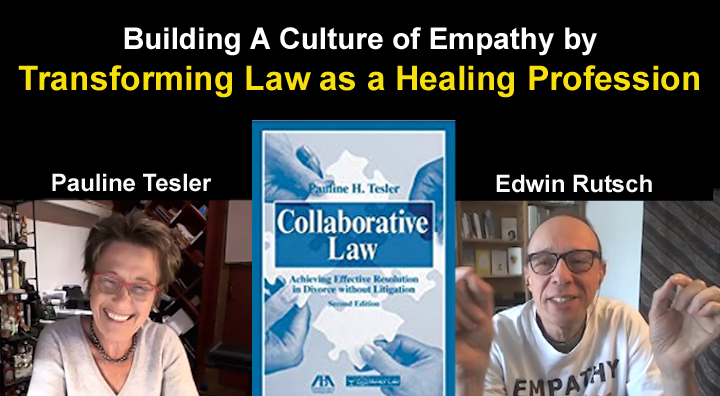
|
|
Pauline
Tesler is a a pioneer in interdisciplinary collaborative legal
practice. She is founding director of the
Integrative Law
Institute, author of Collaborative
Law: Achieving Effective Resolution Without Litigation. Her
workshops and writings catalyzed an international movement called
“Collaborative Law” that is changing the face of family law in 28
nations. In this dialogue we talk about the role of empathy in
transforming law into a healing and collaborative profession.
"We believe that law can be a healing profession, and that lawyers can
be peacemakers. At the Integrative Law Institute, our mission is to bring
insights and tools to lawyers so that they have what they need to return
the practice of law to this original purpose: helping people reach
resolution that heals the conflict."
Lawyers for Empathy |
|
|
|
|
|
Empathy in
Conflict Intervention
Richard Bowers and Nelle Moffett interviewed by Edwin Rutsch |
|
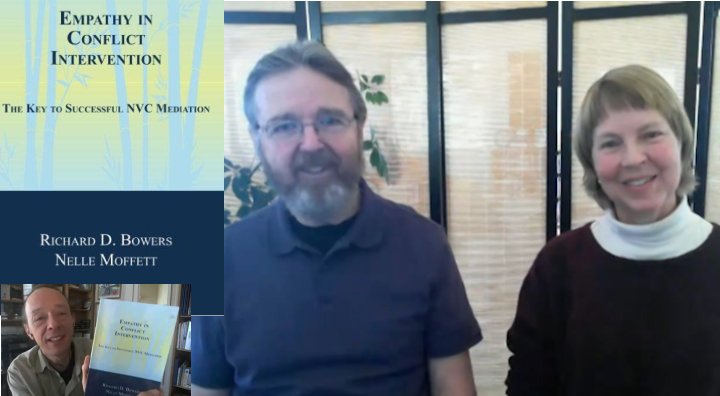 |
Richard Bowers introduces himself by saying, In addition to my private practice, I am a guest lecturer at Antioch
University Midwest's Integral Studies in Conflict & Leadership program, I
serve as a Ventura County Small Claims Court mediation supervisor through
the Ventura Center for Dispute Settlement, and I mediate cases through the
Los Angeles and Ventura County Superior Courts. My private practice,
working with Nelle Moffett, involves workshops, practice groups, and
working with individuals and couples focusing on communication and
conflict coaching.
Nelle and I co-authored Empathy in Conflict Intervention: The Key to
Successful NVC Mediation. This book brings together theories from
psychology, conflict resolution, and sociology to explore the
effectiveness of empathy in mediation.From the book:
"What empathy provides for the mediator is a way to
create an unbiased connection with each client without reverting to a cold
aloofness that is sometimes taught in mediation training."

The
Intervention of the Sabine Women - Jacques-Louis David (wikipedia)
"The impact of mediator empathy towards both parties may provide the
support needed for successful mediation even when there is no ongoing
relationship between the parties. A better understanding of the
power of empathy could lead to increased usage of empathy in mediation.
This increased usage of empathy could increase perspective-taking by the
parties within mediations, leading to increased connection, collaboration,
or satisfaction with the mediation process for both mediators and
disputants. "
Sub
Conference: Justice |
|
|
|
|
|
In Defense of Empathy and
Justice
John Gibbs and Edwin Rutsch
|
|
 |
|
John Gibbs is a professor of developmental psychology at The Ohio State
University and the author of Moral Development and Reality: Beyond the
Theories of Kohlberg, Hoffman, and Haidt. John says, my interests pertain
to cross-cultural sociomoral development, parental socialization, empathy,
prosocial behavior, and antisocial behavior. I have, with students and
colleagues, developed assessment measures of moral judgment, moral
identity, social perspective-taking, self-serving cognitive distortions,
and social skills. Together with
Martin Hoffman
he wrote an article,
Hillary has a point: In defense of empathy and justice.
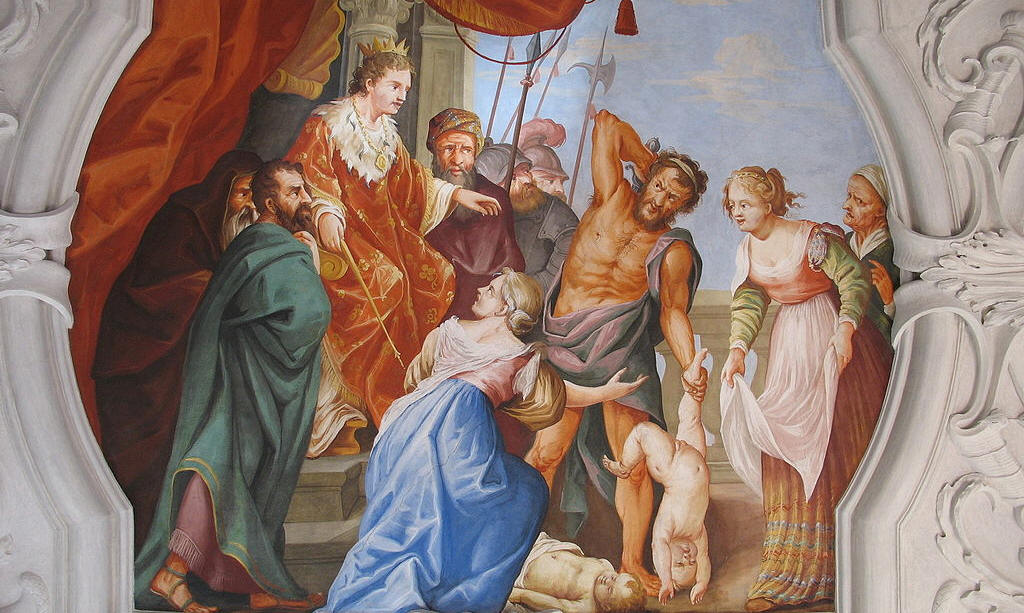
Fresco of the Judgment of Solomon,
(Wikipedia)
Hillary Rodham
Clinton had a point when she recently urged:
"The most important thing each of us can do... is to try even harder to see
the world through our neighbors' eyes, to imagine what it is like to walk
in their shoes, to share their pain and their hopes and their dreams"....
we emphasize that empathy and justice are co-primary or mutual. If justice
serves empathy, the reverse is certainly also true ...
Morality is most objective and compelling when justice and empathy align.
That is, the moral prescription to act is strongest when victims are both
wronged and harmed.
Sub
Conference: Justice |
|
|
|
|
|
Empathy
Connects, Transforms and Removes the Blocks to Action!
Dominic
Barter |
|
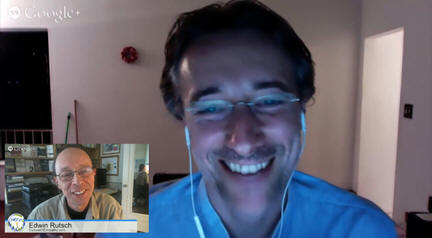 |
|
Dominic Barter plays with dialogue and
partnership, focusing primarily in the fields of education, justice,
culture and social change. In the mid-90s he collaborated in the
development of Restorative Circles,
a community-based and -owned practice for dynamic engagement with conflict
that grew from conversations with residents in gang-controlled shantytown
favelas in Rio de Janeiro.
He adapted the practice for the
Brazilian Ministry of Justice's award-winning national projects in
Restorative Justice and supports its application in a further 25
countries. In recent years he has supervised the mediation program for the
Police Pacification Units in Rio, served as invited professor at the
Standing Group for Consensual Methods of Conflict Resolution, at the High
Court of Rio, with a focus on school mediation and bullying, and focused
on the development of restorative community. Currently Dominic directs the
Dialogue Restoration project for the State Education Department of Rio de
Janeiro and partners with the Centre for the Study of Public Security and
Citizenship at Candido Mendes University.
"There's
something really unique about empathy,
that it clears the things that are blocking action,
and that it
connects both inside and
to other people in a way that
is
transformative."
As a long time student and colleague of Dr. Marshall
Rosenberg Dominic serves on the Board of Directors for the Center for
Nonviolent Communication, shares Nonviolent Communication throughout
Brazil and internationally, and supports its learning in project-based,
community contexts. He has been active in the street movements and
occupations in Rio in recent years. He’s the very happy dad of an amazing
14 year old. You can find out more
about Restorative Circles at
restorativecircles.org

La danse - Henri Matisse
(Wikipedia)
Sub Conference: Justice |
|
|
|
Johan Galtung: How to Build a Culture of Empathy & Peace
|
 |
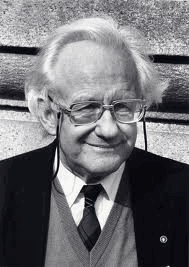 |
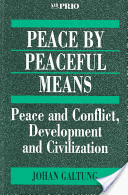 |
Johan Galtung is the principal founder of the discipline of
peace and conflict studies. He founded the Peace Research Institute Oslo in
1959 and is referred to as the "father of peace studies". |
Johan has also mediated in over 150 conflicts between states
and nations. He has published over 100 books, including 'Peace
by Peaceful Means: Peace and Conflict, Development and Civilization'
and "The
Fall of the U.S. Empire - And Then What?”
He co-founded TRANSCEND International which has as its
mission: "To bring about a more peaceful world by using action,
education/training, dissemination and research to transform conflicts
nonviolently, with empathy and creativity, for acceptable and
sustainable outcomes."
He has a quote which I find succinctly sums up the relationship between
empathy and peace.
“By peace we mean the capacity to transform conflicts
with empathy, without violence, and creatively — a never-ending
process”
Sub
Conference: Justice
|
|
|
|
|
|
Four Week
Series: Pattie Porter (The Texas Conflict Coach) Interviews Edwin Rutsch
1.
What Does Empathy Got To Do With It? -
Listen to Podcast
|
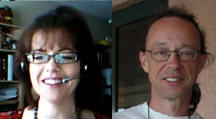 |
|
For many of us engaged in conflict or
embroiled in a dispute, it can be very difficult to muster up empathy and
compassion for the other side. The longer the conflict goes
unresolved it seems the less empathy we have for them as a human being. In
this first of our four episode series–Conflict and Empathy: Where Has
Empathy and Compassion Gone?– we will introduce the “wheel of empathy” and
the “feel of empathy” as
|
|
defined by Edwin Rutsch, Founder of a global empathy movement called The
Center for Building a Culture of Empathy. We will also discuss how
compassion intertwines with empathy and set the foundation for how you
build empathy.
Questions
-
Let’s start by sharing with listeners about how you got
started in this work of building a culture of empathy and creating the
Center.
-
Given that this is the first episode in our series Conflict and Empathy,
let’s set the stage and define some of these concepts.
-
What exactly is empathy and the intention behind it?
-
How is empathy different from sympathy?
-
How does compassion intertwine with empathy?
-
We said that we would introduce two concepts…the “wheel of empathy” and
the “feel of empathy.” What is important to know about these concepts?
-
How do these wheels
tie into the Empathy Circles you host through Google Hangouts?
Sub Conference: Justice |
| |
|
Panel 23 - The Role of Empathy in Crime,
Policing and Justice |
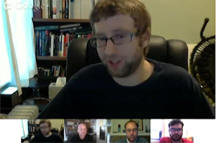 |
Chad Posick
Joe
Brummer
Michael Rocque
Edwin Rutsch |
The role
of empathy in policing, both empathy for and by the police, is
gaining attention from criminal justice researchers and
practitioners. While research on the effectiveness and importance
of empathy in policing is limited, the existing research indicates
that empathy increases perceptions of legitimacy and trust in the
police. |
This panel discusses a range of issues related to
the role of empathy in criminal behavior, punishment, and policing
with a specific emphasis on training police on how to incorporate
empathy into their work.
Sub
Conference: Justice |
|
|
|
Chad Posick: How to Build a Culture of Empathy
in Criminal Justice
System
|
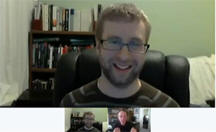 |
|
Chad Posick has a B.S. degree in criminal justice and an
M.S. degree in public policy from the Rochester Institute of Technology.
He just finished his Ph.D in criminal justice from Northeastern University
in Boston, Massachusetts. He has worked with Project Safe Neighborhoods in
the Western District of New York as well as the Department of Criminal
Justice Service’s Project Impact. His research areas include restorative
justice, cognitive behavioral interventions and action research. |
|
We talked about
Chad's research and study:
More Than a Feeling: Integrating Empathy Into the Study of Lawmaking,
Lawbreaking, and Reactions to Lawbreaking. "Empathy
is related, directly or indirectly, to important elements in criminology
such as the enactment of harsh penalties for repeat offenders, antisocial
behavior, feelings of legitimacy toward the law, and attitudes toward the
death penalty. Although empathy is beginning to find its way into
criminological discourse, it is still not well understood nor often
incorporated into quantitative research. "
Sub Conferences:
Science
and
Justice |
|
|
Howard Zehr: How
to Build a Culture of Empathy with Restorative Justice
|
 |
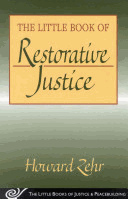 |
Widely known as “the grandfather of restorative justice,”
Zehr began as a practitioner and theorist in restorative justice in the
late 1970s at the foundational stage of the field. Author of many books
including
The Little Book of Restorative Justice. |
We talked about the role of empathy as a foundational value in the
restorative justice movement. Edwin thinks a more accurate term would be
restorative empathy. Howard said, "This vision of mutuality is
supported by neuro science and attachment theory. The new neuro science is
teaching us that we as a human being, our brains are designed to connect
with other people." He feels victims of harm may be resistant to
talking about empathy.
Sub
Conference: Justice
|
|
|
|
Maria Seehausen & Edwin
Rutsch: How to Build a Culture of Empathy with Reflective Listening |
 |
|
Maria Seehausen is a psychologist
and neuroscientist at the Cluster of Excellence: Languages of Emotion of
the Free University Berlin, where she works on her dissertation on the
effects of empathic paraphrasing on emotion in social conflict. She also
works as a freelance
mediator, trainer and coach, and is interested in the scientific
exploration of intervention techniques used in conflict resolution.
Maria is lead on the study, 'Effects of empathic paraphrasing - Extrinsic emotion regulation in
social conflict'. |
"In the present study, we investigated the effects of empathic
paraphrasing as an extrinsic emotion regulation technique in social conflict. We
hypothesized that negative emotions elicited by social conflict can be regulated
extrinsically in a conversation by a listener following the narrator’s
perspective and verbally expressing cognitive empathy.
20 participants were
interviewed on an ongoing or recently self-experienced social conflict... it is possible that empathic paraphrasing not only leads
to a reduction of negative emotion in participants, but even induces
positive emotions, such as happiness and relief about being listened to
and validated.'
Sub Conference:
Science and
Justice
|
|
|
|
Kay
Pranis: How to Build a Culture of Empathy with Circle Process
|
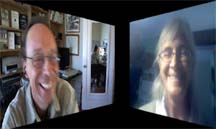 |
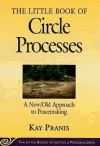 |
Kay Pranis is an independent trainer and facilitator for
peacemaking circles, as well as, an advocate and leader in Restorative Justice and Circle Process movements.
Kay has been involved in the development of circle processes in criminal
justice, schools, neighborhoods, families and the workplace. She is author of,
The Little Book Of Circle Processes: A
New/Old Approach To Peacemaking. |
"We have raised an entire generation without the prerequisites for
developing empathy and then are outraged when they seem not to care
about the impact of their behavior on others. We did not consciously
decide to raise them without empathy, but that is the result of
significant changes in our social behavior . The development of empathy requires:1. regular
feedback about how our actions are affecting others, respectfully
communicated
2. relationships in which we are valued and our worth is validated
3. experience of sympathy from others when we are in pain "
Sub
Conference: Justice
|
|
|
|
Panel 6: How does
Empathy Show up in Your Restorative Justice Work? |
|
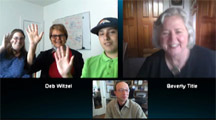 |
Deb Witzel
Rea Blash
Laura Snider
Beverly Title
Edwin Rutsch |
1. How do you all think restorative justice helps
build empathy? Do you have a story of when you saw it or felt it?
2. When you are sitting in a restorative justice process how do
you know when empathy is happening?
3. What ways do you work to build empathy when doing restorative
justice?
4. What else would you like to say about restorative justice and
empathy?
Sub Conference:
Justice |
|
|
Dahlia Lithwick: How to Build a Culture of Empathy on the Supreme Court and Beyond
|
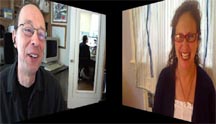 |
|
Dahlia Lithwick writes about the courts and the law for
Slate and
is a commentator on various national media programs such as NPR, Rachael
Maddow Show, Democracy Now, etc. She has written and commented
on the role of empathy
in relationship to the Supreme Court, same-sex
marriage and woman's issues. |
There was a
great deal of
contention and confusion about the nature of empathy during the last
Supreme Court nomination hearings. We talked about preparing now, for
the next Senate discussions and debates about the role of empathy in the
justice system and Supreme Court.
"When Obama talked about
empathy in “The Audacity of Hope,” he was very, very clear. He
didn‘t want judges to make stuff up so that the poor guy wins. What he
said is, put yourself in the other person‘s shoes, right? That was his
mom‘s credo.
When he talks about
empathy, I think all he‘s saying is, just listen. Listen to what
the other side is saying. See if there is merit to their argument.
And then think it through." Sub
Conference: Justice
|
| |
|
Charles Halpern
talks with Edwin about Empathy, Meditation, Barack Obama, Justice &
Law |
 |
|
Edwin's interview with Charles Halpern.
'He is a scholar in
Residence at Boalt Hall School of Law, University of California at
Berkeley, is a public interest entrepreneur, an innovator in legal
education, a pioneer in the public interest law movement, and a
long-time meditator. Charles Halpern has been leading a movement to
promote mindfulness and empathy in the practice of law.' |
| |
|
Peter Gabel on Building a Culture of Empathy in the Justice and Legal
System |
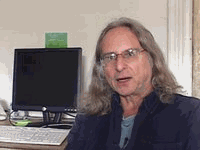 |
|
"A co-founder of the Network of Spiritual Progressives, Peter was
instrumental in creating the Project for Integrating Spirituality,
Law, and Politics, a nationwide group that seeks to bring together
law teachers, lawyers, and law students who seek to connect the
inner and the outer in a fundamental transformation of legal
culture. "
An editor at Tikkun Magazine.
"We social change activists need to
move forward in a way that manifests, respect, concern and care.
That doesn't dominantly manifest anger, bitterness, resentment and
rage.... We need to become militant empathy advocates." |
|
|
Dominic Barter
Dialog on the Nature of Empathy |
 |
|
Founder of the Restorative Circles
conflict mediation process
"One of the things I experience when empathy is present,
is that the blocks to action, which does not exclude are removed. So one
of the ways that I can identify that empathy is present, is that whatever
is impeding action is gone, and that the quality that that action has is
that it tends to include, it connects, it brings pieces together, it
resolve what appears to be knotted and bond." |
|
|
|
Molly Rowan:
How to Build a Culture of Empathy with Restorative Justice
|
|
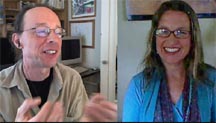 |
|
Founder and Director of Mali Rowan Presents, Mali Rowan
Leach is host, producer, catalyst, social media specialist. Her key focus
is social media & transformation, social healing and restorative justice.
She says empathy is like bridge or a pair of shoes that alchemize one's
awareness,
extending it beyond our immediate selves
into the experiences, feelings, and
awareness's of others in the past, present and future.
The opposite is like living in a dark cave. We
need to move the justice system out of the cave into the light of
restorative empathy and justice.
Sub
Conference: Justice |
|
|
Fred
Sly & Vika Miller: Dialogs on
How to Build a Culture of Empathy in Prisons |
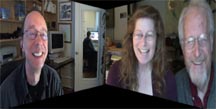 |
|
Fred Sly, Program Director &
Vika Miller, Executive Director, The Oregon Prison Project.
Working
with Compassionate Communications/NVC to transform prisons
and make them cultures of empathy. Fred says
empathy is like a puppy dog pile
where
no-one is embarrassed to play and
all are included versus coldness and mechanical robots.
Vika says it's like a compassionate room where we can be
everything that we are. There is room, space and acceptance
for all that we are as human beings.
The opposite of empathy would be
a closed fist of disconnection,
resistance, closed heartedness.
Sub
Conference: Justice |
|
|
|
Emily Gould:
Dialogs on How to Build a Culture of Empathy
in the Justice System |
 |
|
Empathic Mediation and Empathic Communication
Beneath the positions and strategies of people in conflict lies a magnetic
field of possibility, our common humanity, ready to invite resolution.
Empathic Mediation is a structure for resolving conflict that taps into
this rich source of resolution with empathy.
Sub
Conference: Justice |
|
|